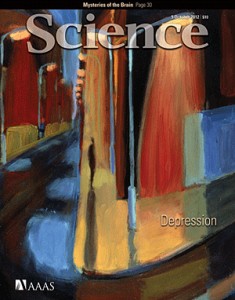- >>
- Healthy Adult Studies
- HCP Young Adult
- News
- Article
Science Magazine: HCP data will contribute to our understanding of individual variability in brain structure and activity
 An article published in Science Magazine asks one of the most intriguing (and challenging) questions in neuroscience: “Why are you and your brain unique?”
An article published in Science Magazine asks one of the most intriguing (and challenging) questions in neuroscience: “Why are you and your brain unique?”
Intriguing, because the variability in brain structure and activity between individuals, even the variability within an individual’s lifespan, contain untold numbers of mysteries that can unlock secrets of our personalities, our behavior, and our cognitive capacity.
Challenging, because there is so much we don’t know about how the brain works at a macroscopic level, averaged across populations, and the amount of data required to explore it is staggering. This is where the Human Connectome Project is poised to offer value to the research community.
The article, whose publication coincided with the release of the Human Connectome Project’s first public data set, looks closely at genetic factors in the brain’s development. The impact of gene expression in human brain mapping has been explored in such projects as the Allen Brain Institute, but on a limited number of individuals. From the start, genetic factors played a strong consideration in the recruitment of HCP subjects, whose pool is made up of 300 pairs of twins, as well as non-twin siblings for each pair.
The article’s author, Greg Miller, spoke with David Van Essen on the impact of HCP data on this research. With 1,200 healthy subjects slated to be enrolled, researchers will have an extraordinarily rich data set to compare variations in brain structure with differences in cognitive and behavioral performance.
Whether the differences in neural circuitry that make each person unique will be visible at the resolution of MRI scans is an open question. “It’s sobering for sure that the resolution is only at the level of a millimeter or two, which means that each voxel contains literally hundreds of thousands of neurons or axons,” Van Essen says. (A voxel is the smallest volume of brain tissue discernable in a brain scan.) “But I’m confident we’ll see interesting individual differences.”
Twelve subjects are included in the HCP’s initial data release; roughly eighty will be included in the first full quarterly data release, scheduled for February 2013. Data from genotyping of these subjects will become available at the end of the project. In the meantime, there will be plenty of evidence on individual variability and the heritability of brain circuits available for those willing to look.
Read the full article at ScienceMag.org.
Get access to HCP public data releases.